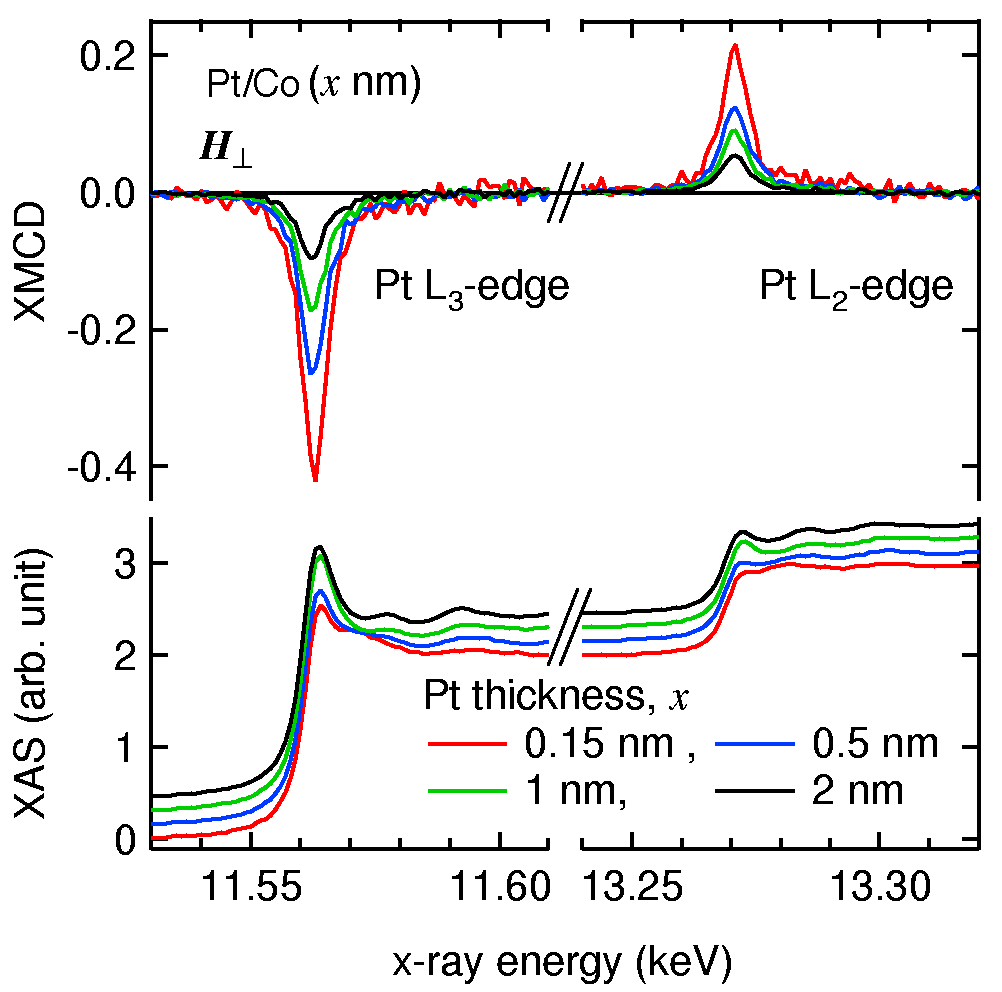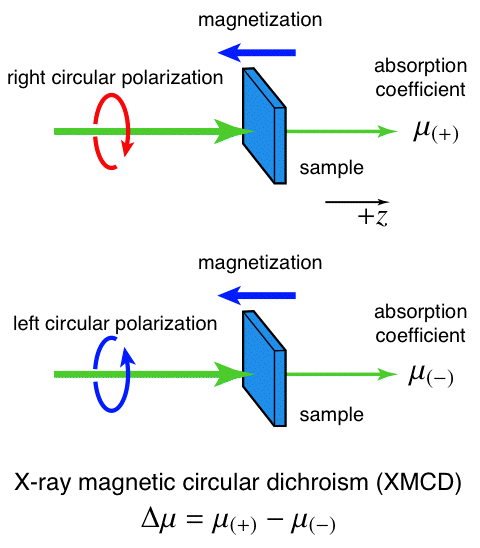Magnetic moment of the Pt overlayer in Pt/Co bilayers
Inquiry number
SOL-0000001026
Beamline
BL39XU (X-ray Absorption and Emission Spectroscopy)
Scientific keywords
| A. Sample category | inorganic material |
|---|---|
| B. Sample category (detail) | magnetic material, synthetic multilayer |
| C. Technique | absorption and its secondary process |
| D. Technique (detail) | XAFS, XANES, MCD, LD |
| E. Particular condition | polarization (circular), room temperature, magnetic field (< 2 T) |
| F. Photon energy | X-ray (4-40 keV) |
| G. Target information | spin/magnetism |
Industrial keywords
| level 1---Application area | storage device |
|---|---|
| level 2---Target | HD,MO |
| level 3---Target (detail) | magnetic layer, magnetic head, spin valve |
| level 4---Obtainable information | magnetic moment, magnetic anisotropy, interface magnetic structure |
| level 5---Technique | XAFS, NEXAFS, XMCD |
Classification
A80.14 magnetic materials, M40.10 XAFS, M40.30 XMCD
Body text
X-ray magnetic circular dichroism (XMCD) spectroscopy is a unique technique to study magnetism of a particular element in the magnetic sample. Using this technique, one can separate magnetization of each elements in a sample that consists of several magnetic elements or magnetic and non-magnetic elements. The technique allows high-sensitive detection of weak magnetization induced in non-magnetic elements, such as Cu, Pt, and Au. The figure shows XMCD spectra of Pt/Co bilayers with different Pt overlayer thicknesses. From an analysis of these data, the induced magnetic moment in an interface Pt atom was estimated to be 0.6 B. The depth profile of Pt magnetization was determined as a function of the distance from the Pt-Co interface.
Fig. X-ray magnetic circular dichroism (XMCD) spectra in Pt/Co bilayers, measured at the Pt L2,3 edges.
[ M. Suzuki and H. Muraoka, Journal of the Japanese Society for Synchrotron Radiation Research 17, 201-207 (2004), Fig. 4,
©2004 The Japanese Society for Synchrotron Radiation Research ]
Source of the figure
Original paper/Journal article
Journal title
放射光 vol. 17, No. 4, p. 201 (2004).
Figure No.
Fig. 4
Technique
An X-ray magnetic circular dichroism (XMCD) spectrum is measured by monitoring a small difference in X-ray absorption spectra between for right- and left-circular polarizations. In this solution, X-ray energy was tuned to the characteristic absorption edges of Pt to observe the magnetism of the Pt overlayer in Pt/Co bilayers.
Fig. Principle of X-ray magnetic circular dichroism (XMCD) measurement.
Source of the figure
Private communication/others
Description
鈴木基寛が作成しました。
Required time for experimental setup
6 hour(s)
Instruments
| Instrument | Purpose | Performance |
|---|---|---|
| Electromagnet and closed-cycle helium refrigerator | XMCD spectroscopy measurement | magnetic field ±2 T, sample temerature 20-300 K |
| Silicon drift detector | XMCD measurement in the fluorescense mode | Energy resolution~300 eV, count rate 2x10^5 cps |
References
| Document name |
|---|
| M. Suzuki, H. Muraoka, Y. Inaba, H. Miyagawa, N. Kawamura, T. Shimatsu, H. Maruyama, N. Ishimatsu, Y. Isohama, and Y. Sonobe, Phys. Rev. B 72, 054430 (2005). |
| 鈴木基寛, 村岡裕明: 放射光 17, 201 (2004). |
Related experimental techniques
VSM magnetometry, SQUID magnetometry, toruque magnetometry, X-ray magnetic diffraction, X-ray magnetic reflectometry
Questionnaire
The measurement was possible only in SPring-8. Impossible or very difficult in other facilities.
This solution is an application of a main instrument of the beamline.
Similar experiments account for more than 30% of the beamline's subject.
Ease of measurement
Easy
Ease of analysis
Middle
How many shifts were needed for taking whole data in the figure?
Four-nine shifts



